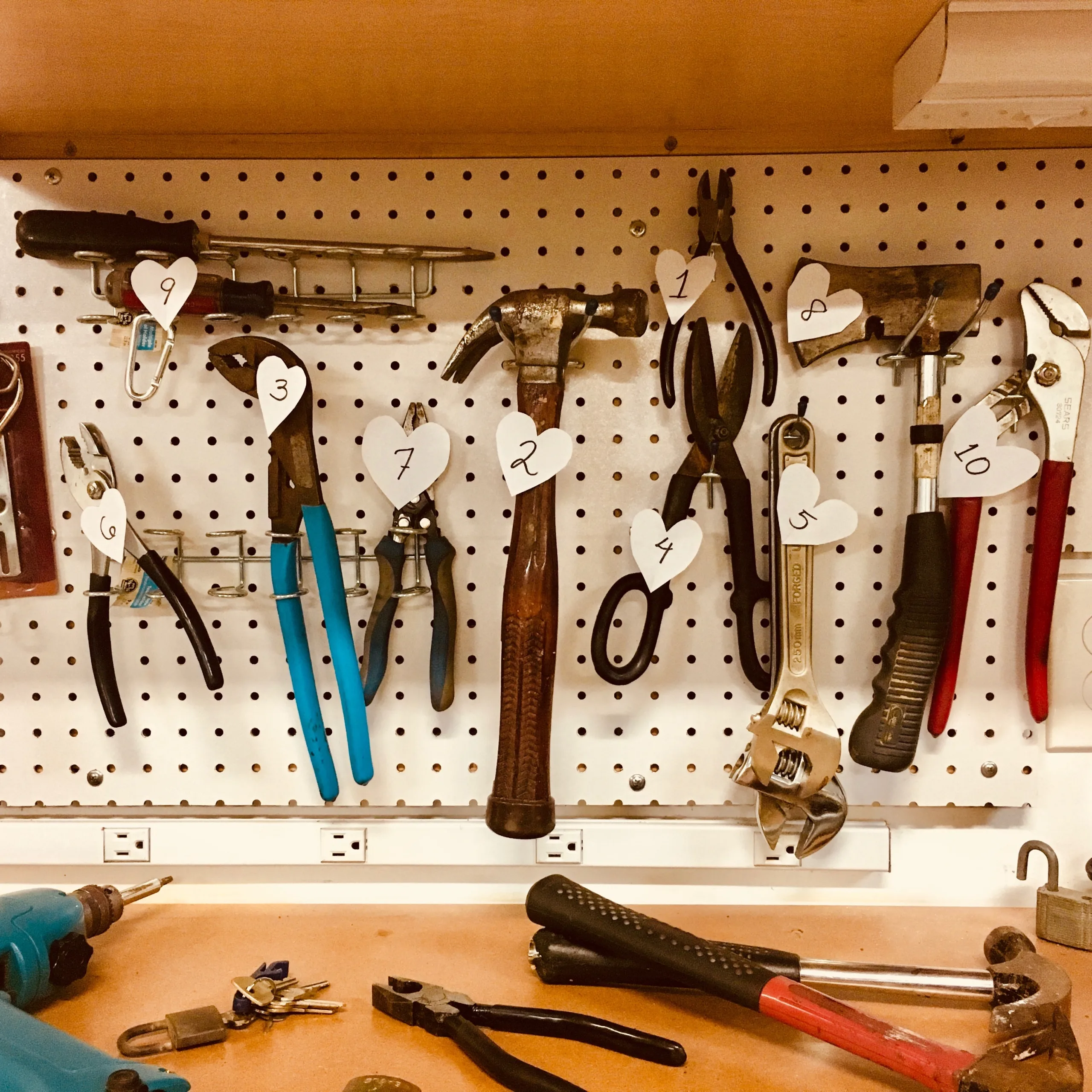RVing is an adventure that appeals to many people, offering the freedom to travel and explore new places on your own terms. However, as with any form of travel, RVing also comes with its own set of challenges and potential hazards. One important aspect of safe and enjoyable RV travel is having a well-stocked tool kit on board.
Whether you’re a seasoned RVer or planning your first trip in 2023, it’s essential to be prepared for any emergency repairs that may arise while on the road. To help ensure you have everything you need, we’ve compiled a list of 25 must-have tools for your RV tool box. These tools have been recommended by experts in the field, taking into account their usefulness for common repairs and maintenance tasks while also considering space limitations and carrying capacity.
From wire cutters to tire pressure gauges, our list covers all the essentials you’ll need to keep your RV running smoothly and safely throughout your travels. So read on and get ready to hit the road with confidence!
My Top 25 RV Tool Kit Essentials
1. Screwdrivers
A multi-bit screwdriver is a crucial tool that should be included in every RV tool kit. It is versatile and can be used for most repairs and maintenance tasks on the road. A flat head, a Phillips head, and a variety of sizes for each will cover most screwdriver needs. One recommended brand is the Picquic Stubby, which has multiple bits that can be easily switched out depending on the task at hand.
2. Pocket Knife
One of the most versatile and reliable tools to carry every day is a pocket knife, making it an essential addition to any collection of equipment for outdoor activities or DIY projects. When it comes to choosing a pocket knife for your RV tool kit, two recommended brands are Spyderco and Benchmade. Both brands offer high-quality knives with durable blades that can handle a variety of tasks.
Carrying a pocket knife every day has many benefits, including the convenience of having a tool readily available for cutting rope, opening packages, or even preparing food. However, safety should always be a top priority when carrying any type of blade. It’s important to follow proper handling techniques and keep the knife secured in its sheath when not in use.
Regular maintenance and sharpening will also help keep your pocket knife in good condition and ready for use whenever you need it.
3. Flashlights
A reliable and bright flashlight is an indispensable tool for any outdoor activity or emergency situation, illuminating one’s path and providing a sense of security in the dark. In an RV tool kit, a powerful flashlight such as the Pelican LED flashlight is recommended. This high-quality flashlight is waterproof, durable, and has multiple lighting modes to suit various needs. It also has a long battery life and can be easily rechargeable using USB.
4. Tire Pressure Guage
Checking the tire pressure is an important aspect of RV safety, and having a reliable and accurate digital tire pressure gauge like the Accutire can help ensure that your vehicle runs smoothly on the road. Correct tire pressure not only improves fuel efficiency but also prevents premature wear and tear on your tires.
The Accutire digital tire pressure gauge is recommended for its easy-to-read LCD display, ergonomic design, and accuracy within 0.5 PSI. Weight limitations are crucial when choosing tools to bring on an RV trip, and having a compact yet effective tire pressure gauge like the Accutire is essential for any RV tool kit.
5. Adjustable (Crescent) Wrench
The adjustable wrench, with its versatile design and ability to replace a whole set of SAE and metric wrenches, is a valuable addition to any toolkit. Its adjustable jaw allows for efficient maintenance and repairs without taking up excessive space, making it an essential tool for RV enthusiasts.
Overall, incorporating an adjustable wrench in an RV tool kit provides versatility and efficiency in repairs while minimizing the need for excess tools to take up valuable space in limited storage areas.
6. Socket Wrench Set
Moving on from the adjustable wrench, another essential tool for any RV tool kit is a socket and ratchet set. This tool set is necessary for reaching tight spaces that cannot be reached with a wrench. With its multiple sizes and attachments, it can replace an entire set of SAE and metric wrenches.
When choosing a socket and ratchet set, consider the quality of materials used to ensure durability. Additionally, look for sets with both standard and deep sockets to accommodate various types of bolts and nuts. Properly organizing your socket and ratchet set within your RV tool kit will save you time when searching for the right size during emergency repairs.
7. Hammer
One fundamental item to include in any comprehensive set of repair tools is a hammer, which can be used for various tasks such as driving nails or removing stubborn bolts. When selecting a hammer for your RV tool kit, it’s important to consider the weight and size of the tool. A small hammer with a comfortable grip can be more practical and easier to use in tight spaces than a large one.
8. Duct Tape
Duct tape is a versatile and widely used tool for emergency repairs in various settings, including the RV. It can be used to patch holes in tents or tarps, fix leaks in pipes or hoses, hold broken parts together temporarily, and even remove lint from clothing. In the RV context, duct tape can be particularly useful for fixing exterior mishaps such as torn awnings or damaged siding. While it may not provide a permanent solution to these problems, duct tape can serve as a temporary fix until more extensive repairs can be made.
9. Pliers
Pliers are a versatile and essential tool to have in any toolkit, including those for RVs. They can be used for gripping and holding objects, bending wires or metal pieces into shape, cutting wires or zip ties, and even removing nails or screws. In an RV tool kit, pliers can come in handy when fixing electrical systems or managing wires. Wire strippers are also useful for electrical repairs, and they should be included in the kit along with pliers.
10. Electrical Tape
When you’re out on the road in your RV, being prepared for any situation is important. And while you may have a full toolbox with all the heavy-duty tools you need, don’t forget to include some of the smaller, but essential, items like electrical tape.
Electrical tape may seem like a small item, but it can be a lifesaver when you need a temporary fix for damaged cables or wire connectors. For example, if you have a wire that’s been pinched or damaged in some way, applying electrical tape can help keep it together until you can properly repair it.
When it comes to electrical tape, it’s important to carry both black and red tape. The black tape is typically used for general repairs and is perfect for patching up any damaged wire or cables. The red tape, on the other hand, is used for marking positive wires, helping you quickly identify which cable is which.
Additionally, it’s worth investing in quality electrical tape, such as TICONN connectors, which are designed to be durable and long-lasting. These types of tapes are more reliable and can withstand harsh weather conditions, making them the perfect addition to your RV tools kit.
11. Allen Wrenches
When it comes to working on modern-day vehicles, having the right tools is essential. One tool that cannot be overlooked is the Allen wrench. These hexagonal wrenches are used to undo bolt heads that have a hexagonal recess. If you don’t have the right size or fit of Allen wrench, it can cause the edges of the bolt to round off, making the job much more difficult.
To avoid this, it’s crucial to have a set of Allen wrenches that fit the bolts properly. This applies to both SAE and metric bolts, so it’s recommended to purchase a mixed set of Allen wrenches to ensure you have all the necessary sizes for any job.
When it comes to modern-day vehicles, the use of both imperial and metric bolts is common, so having a mixed set of Allen wrenches is ideal. Plus, it’s always good to have spare wrenches on hand in case one gets lost or damaged during a project.
12. Zip Ties
In addition to contact glue, another versatile tool that should be included in an RV tool kit is zip ties. Zip ties are useful for managing wires and holding things together in an emergency fix. They can also be used for various purposes beyond just securing items, such as creating makeshift hangers or even fixing broken zippers on clothing.
13. Level
A bubble level is an inexpensive tool that can greatly improve the stability and safety of an RV. Studies have shown that even a slight incline can cause discomfort and sleep disruption for occupants, making it essential to have a level RV. It is important to choose a bubble level with a weight capacity that matches your RV, as well as one that is easy to read and use. Additionally, if you have aftermarket wheels or lifts on your vehicle, stock tools may not work for changing tires or performing other repairs.
14. Utility Knife
A good utility knife is durable, has a retractable and adjustable blade, and comes with a locking mechanism. At times, you may need to cut through dense materials such as ropes, plastics, leather, or cardboard boxes. With a utility knife, you can do that with ease.
Apart from cutting tasks, a utility knife is also useful when performing modifications to your RV. You can make precision cuts to fit new parts or accessories or trim edges to ensure a clean finish. The utility knife’s small size and sharpness make it an indispensable tool to have in your RV tool kit.
To ensure that your utility knife remains sharp throughout its use, consider keeping spare blades in your kit. Utility knife blades can wear out or become blunt over time with frequent use, and you don’t want to be caught without a sharp blade when you need it the most.
15. Tape Measure
Measuring tools are essential for any RV tool kit, and a tape measure is useful for measuring both interior and exterior dimensions as well as for ensuring proper placement of items. When choosing the right tape measure, consider the length needed and whether it should be retractable or not. A digital tape measure may also be beneficial as it can provide more accurate measurements and can easily convert between units.
16. Multimeter
One useful device for diagnosing electrical issues and understanding DC electricity is the multimeter. This tool can measure voltage, current, and resistance in circuits and can help troubleshoot problems with RV electrical systems. Using a multimeter requires some knowledge of electrical systems and safety precautions to avoid injury or damage to equipment.
When troubleshooting electrical issues with a multimeter, start by disconnecting power from the circuit being tested and following proper safety procedures.
Regular maintenance and calibration of your multimeter are also essential for accurate readings. Overall, incorporating a reliable multimeter into your RV tool kit can help you identify and solve potential electrical problems on the go.
Tips for using a multimeter:
- Read the instructions carefully before use
- Always wear protective gear such as gloves and goggles when working with electricity
- Check that the meter is properly calibrated before taking measurements
How to choose the right multimeter for your RV:
- Determine what features you need (e.g., AC/DC voltage measurement)
- Consider your budget
- Look for reputable brands with good reviews
Multimeter safety precautions:
- Never touch live wires or components without proper training or tools
- Use caution when testing high-voltage circuits
Multimeter maintenance and calibration:
- Keep your meter clean and dry
- Calibrate your meter regularly according to the manufacturer’s instructions.
17. Thread Seal Tape
Also known as plumber’s tape, this versatile item is crucial for leak prevention and DIY repairs in RV plumbing systems.
Its primary purpose is to create a watertight seal between threaded connections, preventing leaks and ensuring smooth water flow. Thread seal tape works by filling in the gaps between threads, creating a tight seal that prevents water from leaking out of joints and connections.
It can be used on all types of RV plumbing systems, including those made of copper, brass, PVC, and other materials. With its easy-to-use design and sealing techniques, thread seal tape should be a staple in every RV toolkit for quick fixes on the go.
18. Leather Work Gloves
Another essential item in the RV tool kit is a pair of leather work gloves. These gloves provide personal safety while handling hot items or picking up firewood. As an RVer, it’s important to be prepared for any situation that may arise, and having a reliable pair of leather gloves will ensure that your hands are protected during any necessary repairs.
19. High Capacity Bottle Jack
The proper size and weight capacity of a bottle jack is crucial for safely lifting and leveling an RV, making it essential to consider purchasing a high-capacity bottle jack that can handle the weight of your vehicle.
When using a bottle jack, there are several safety precautions to keep in mind, such as ensuring the vehicle is on level ground and chocking the wheels before lifting.
By investing in a high-capacity bottle jack and taking necessary safety precautions when lifting and leveling your RV, you can ensure safe travels on the road.
20. Portable Air Compressor
An air compressor can come in handy for several reasons, such as inflating tires or blowing debris out of hard-to-reach areas. It can also be used for powering pneumatic tools like nail guns and impact wrenches.
If there is enough room in your RV, it’s recommended to invest in an air compressor that meets your specific needs. If space is limited, alternatives to an air compressor include using a portable 12-volt tire inflator or stopping at gas stations with free air pumps.
Maintaining proper tire pressure saves fuel and tire wear, so topping off the pressure between stops is vital.
21. Shovel
A sturdy shovel is a valuable addition to any outdoor adventurer’s gear, capable of digging fire pits, clearing trails, and leveling campsites. When choosing the right shovel for your RV tool kit, consider the size and weight of the tool as well as its durability. Look for shovels made from high-quality materials such as steel or aluminum that can withstand heavy use over time.
22. Axe
When selecting gear for outdoor activities, it is important to consider the versatility and durability of every tool you bring along, including an axe. An axe can be a valuable addition to an RV tool kit as it can be used for chopping firewood, clearing brush, or even self-defense.
Consider the weight and length of the handle, as well as the type of head. A longer handle will provide greater leverage but may be heavier to wield, while a shorter handle offers more control but less force.
Safety should always be a top priority when using an axe. Always wear eye protection and gloves when using an axe and ensure that there is no one else in your immediate vicinity. Keep your fingers away from the edge of the blade and always swing with both hands on the handle.
When maintaining your axe, keep it sharp and clean by regularly sharpening the blade and wiping down the handle with linseed oil to prevent cracking. Some recommended brands of axes include Gransfors Bruk, Hultafors, Fiskars X-Series, Wetterlings Bushman Axe and Estwing E45A Camper’s Axe which are all known for their quality craftsmanship and durability.
23. Spool Of Electrical Wire
RVs have complex electrical systems that require regular maintenance and repairs. Having a spool of wire on hand can help you quickly fix any wiring issues that may arise while on the road.
When selecting wire for your RV, it’s essential to consider the gauge and type of wire needed for each specific application. Additionally, proper spool organization can save time and reduce frustration when searching for a specific wire. Wire stripping tools and crimping techniques are also important skills to have in order to properly repair or replace damaged wires.
By including a spool of wire and learning proper RV wiring techniques, you can ensure that your electrical system stays in top condition during all your travels.
24. Wire Stripper/Cutter
Proper maintenance and repairs of an RV’s complex electrical systems necessitate the inclusion of a Wire Stripper/Cutter in the tool kit, as it allows for quick removal of insulation from copper wires without causing damage.
This tool is essential for anyone who wants to engage in DIY electrical work on their RV.
A wire stripper/cutter can help ensure that all wiring connections are secure and functioning properly, which can prevent costly breakdowns or accidents while on the road.
25. Lithium Battery Jumper
Having a functioning battery is vital for an enjoyable camping experience. Without one, you could be left stranded on the side of the road or at a remote campsite.
The Lithium Battery Jumper is the perfect solution to this problem. With this tool, you can jump-start your RV batteries independently, without the need for someone else’s help. This means you can hit the road with confidence, knowing that you have a backup power source.
One popular Lithium Battery Jumper is the NOCO Boost Pro GB150 3000 Amp 12-Volt UltraSafe Lithium Jump Starter Box. This powerful yet compact device can jump-start both gas and diesel engines. It is also easy and safe to use, making it an attractive option for RVers who are not experienced mechanics.
But the NOCO Boost Pro GB150 is not just a Lithium Battery Jumper. It also doubles as a battery pack, allowing you to charge your electronic devices while you’re on the road. This feature comes in handy when boondocking or staying in campsites without access to power.
In summary, investing in a Lithium Battery Jumper like the NOCO Boost Pro GB150 is a wise choice for anyone RVing. It provides peace of mind knowing that you won’t be stranded due to a dead battery, and the additional benefits of having a battery pack make this tool even more versatile. Add it to your RV tool kit today and hit the road with confidence.
Frequently Asked Questions
What Is The Best Way To Store My Rv Tool Kit?
Organizing and storing a tool kit for an RV is no small feat. It requires thoughtful consideration of the type, quantity, and size of tools you may need on your next road trip.
To ensure that your belongings are safe and secure while in motion, it’s important to choose a storage solution that can protect your items from any bumps or shocks along the way. Consider investing in something like a plastic tackle box which will keep everything organized and easy to find when needed.
Additionally, specialized drawers with compartments can be added to existing cabinets or shelves within your RV for additional storage space. Not only do these provide extra security but they also help to minimize clutter by allowing you to store multiple items in one place.
How Often Should I Check The Tools For Wear And Tear?
Regularly checking and assessing the wear and tear of tools used for RV trips is essential for creating a safe, successful journey. Routine maintenance can prevent potential problems from occurring on the go, so it’s important to consistently monitor each tool in your kit.
An expert suggests inspecting all items at least once every few months; this allows you to spot any damage or significant changes that may have occurred throughout its use. Regularly assessing your tool kit ensures everyone’s safety while traveling, as well as promotes an overall positive experience.
How Do I Know Which Tools Are Compatible With My Rv?
When considering which tools to include in an RV tool kit, it is important to know which are compatible with the specific make and model of an RV.
Different makes and models require different types of tools as well as variations in sizes.
As such, researching exactly what type of tool will work best for one’s particular RV is essential before making any purchases.
Moreover, being aware of the latest innovations that may be available can provide additional peace of mind when out on the road.
What Other Items Should I Consider Adding To My Rv Tool Kit?
Building the perfect RV tool kit requires more than just assembling a few essential items; it’s an opportunity to create a fortress of safety and security.
As you consider what else to add, ask yourself if these tools will help you be prepared for any situation that may arise on your journey.
From emergency flares and tire repair kits to first aid supplies, every item should be carefully considered in order to craft the ideal tool kit.
By taking the time to research and select each piece with care, you can ensure that you have all the necessary resources needed for a safe trip.
What Safety Precautions Should I Take While Using The Tools?
When using tools in a recreational vehicle (RV), it is essential to take certain safety precautions.
It is important to wear protective eyewear and gloves, as well as closed-toe shoes to prevent any cuts or scrapes from the sharp edges of the tool.
Make sure that you are familiar with all of the components of the tool before operating them, such as identifying the power switches for electric machines and knowing how to use manual equipment safely.
Additionally, check for faulty wiring or loose connections prior to plugging anything into an outlet.
Being aware of your surroundings while working on projects can also help ensure that you remain safe at all times.
Conclusion
In conclusion, a well-stocked RV tool kit is essential for any traveler and should include must-have tools such as an air compressor, tire pressure gauge, multi-bit screwdriver, flashlight, adjustable wrenches, socket and ratchet set, pliers, duct tape, and leather work gloves. These tools can help with DIY repairs and RV tire maintenance while on the road.
As travelers who value freedom and independence on the road, having a complete RV tool kit can provide peace of mind knowing that you have everything you need to handle unexpected situations. With regular maintenance and upkeep of your RV tool kit, you can be ready for any situation that arises while exploring new destinations.
So invest in high-quality tools that will last and continue to add useful items to your kit over time. Remember: being self-sufficient is one of the most rewarding aspects of RV travel!
Photo by Kim Stiver





